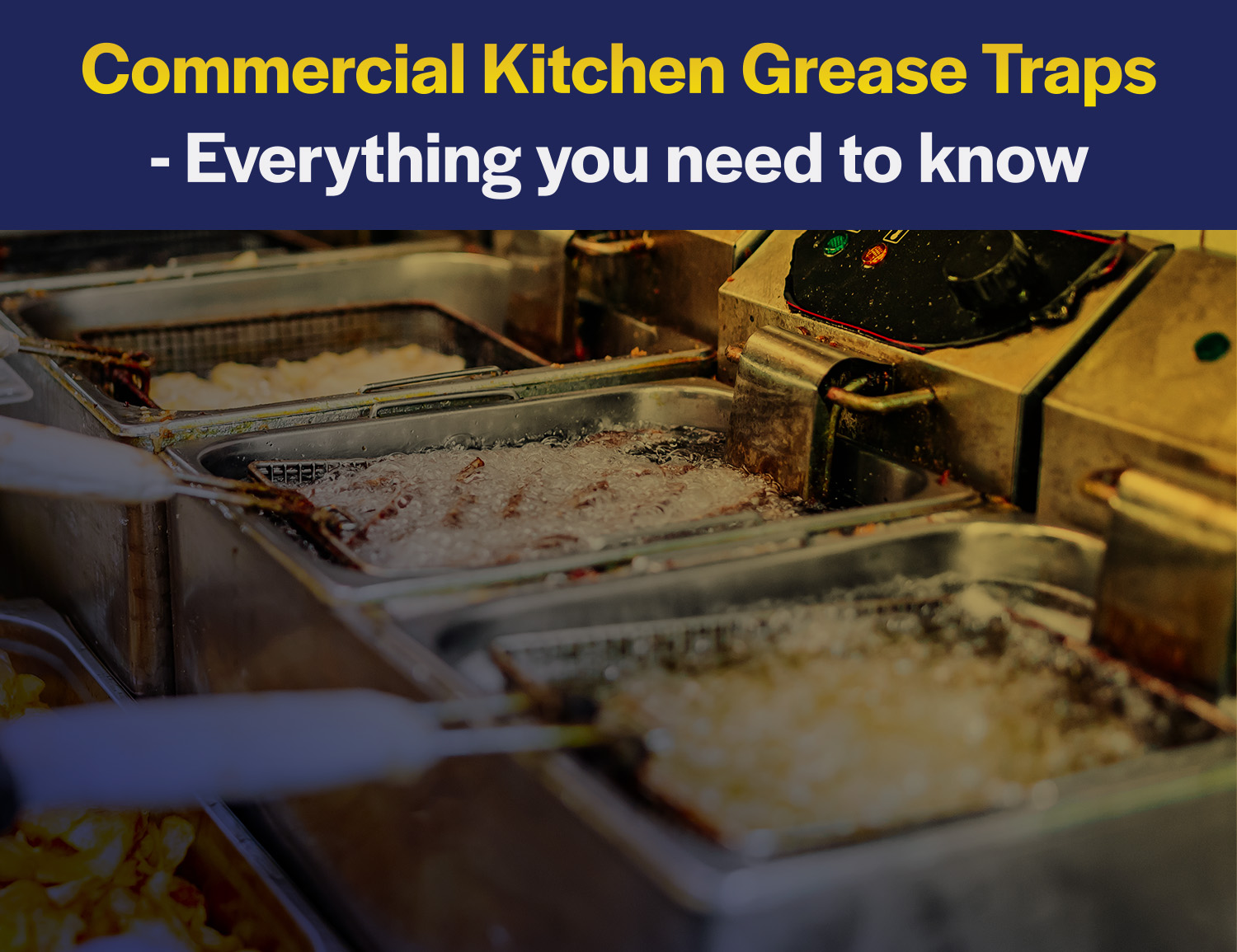
In the bustling world of commercial kitchens, where the sizzle of grills and the clatter of pots and pans create a symphony of culinary activity, one often-overlooked hero plays a crucial role in maintaining the smooth operation of these spaces—the grease trap. Commercial kitchen grease traps are responsible for preventing grease and other solid waste from clogging drains and causing plumbing nightmares. In this comprehensive guide, we delve into everything you need to know about commercial kitchen grease traps, from their importance and functionality to maintenance and regulatory compliance.
The Role of Commercial Kitchen Grease Traps
Commercial kitchen grease traps, also known as grease interceptors, serve as a barrier between the kitchen’s wastewater and the municipal sewage system. As kitchens produce a significant amount of grease, oil, and other fats during cooking, it’s essential to trap these substances before they enter the plumbing system. Grease traps work by allowing the wastewater to flow through while capturing and retaining grease and solids. This ensures that only relatively cleaner water reaches the municipal sewer lines, preventing clogs, backups, and environmental issues.
How Grease Traps Function
Grease traps employ a straightforward mechanism to separate grease and solid particles from the wastewater. They consist of a large, box-like container installed underground or within the kitchen, usually close to the dishwashing or cooking areas. The incoming wastewater first passes through a baffle that slows down its flow. This reduction in speed allows grease and solids to separate from the water due to their different densities.
As the water continues to flow through the trap, the lighter grease floats to the top, forming a layer, while the heavier solids settle at the bottom. The relatively cleaner water then flows out of the trap through an outlet pipe. The grease and solids trapped in the container need periodic removal to ensure the trap’s continued effectiveness.
Types of Grease Traps
Commercial kitchen grease traps come in various types, each catering to different kitchen sizes and needs. The three primary types are gravity grease traps, passive grease traps, and automatic grease traps.
Gravity Grease Traps. These are the most common and cost-effective types of grease traps. Gravity grease traps rely on the natural force of gravity to separate grease and solids from wastewater. They are suitable for smaller commercial kitchens with moderate grease production.
Passive Grease Traps. Most commonly used in smaller establishments. These types of traps rely on heat and gravity to separate the grease from wastewater. They control the flow of water allowing the hot water to cool causing fats and oils to solidify and get trapped in the baffle, while the remaining wastewater continues to flow.
Automatic Grease Traps. Designed for larger kitchens with higher grease output, automatic grease interceptors work on a programmed schedule. They include features like motorized skimmers or augers to remove grease automatically. While they are the most expensive of the three they are more efficient while requiring less maintenance making them the preferred choice in high-volume kitchens.
Grease traps are commonly constructed from materials such as plastic, stainless steel, or concrete. The choice of material depends on factors such as the kitchen’s size, the type of grease produced, and local regulations. Stainless steel traps are durable and resistant to corrosion, making them suitable for high-volume kitchens. Plastic traps, on the other hand, are lightweight and may be more cost-effective for smaller establishments.
Grease Trap Installation and Sizing
Proper installation and sizing of grease traps are critical for their efficiency. The size of the grease trap should be proportionate to the kitchen’s water flow and grease production. Installing an undersized grease trap can lead to inadequate separation, while an oversized trap may result in inefficient operation and unnecessary expenses.
Consulting with plumbing professionals during the initial design and construction phases of a commercial kitchen ensures that the grease trap is appropriately sized and installed in compliance with local regulations.
Legal and Environmental Compliance
Regulatory compliance regarding grease trap maintenance and installation varies by location. Many municipalities and environmental agencies have specific guidelines and requirements for commercial kitchens to prevent grease-related issues in the sewer system. Non-compliance can result in fines and penalties, making it imperative for businesses to stay informed about local regulations and adhere to them.
Additionally, proper grease trap maintenance contributes to environmental sustainability by reducing the impact of kitchen wastewater on sewage treatment plants. By capturing and disposing of grease responsibly, businesses play a crucial role in protecting local waterways and ecosystems.
Importance of Regular Maintenance
Proper maintenance of commercial grease traps is critical for their efficient performance. Neglecting maintenance can lead to clogs, foul odors, and even legal consequences for non-compliance with local regulations. Regular maintenance tasks include inspecting and cleaning the trap, removing accumulated grease and solids, and checking for any signs of wear or damage. Establishing a maintenance schedule based on the kitchen’s usage is essential to prevent issues and extend the lifespan of the grease trap.
The frequency of cleaning depends on the size of the grease trap and the volume of grease generated in the kitchen. While smaller traps may require cleaning every few weeks, larger interceptors may need more frequent attention. Cleaning involves pumping out the accumulated grease and solids from the trap, ensuring that it retains its capacity for effective separation. Many businesses opt to hire professional grease trap cleaning services to handle this task, as they have the equipment and expertise to perform thorough cleanings and dispose of the waste responsibly.
Signs of Grease Trap Issues
Understanding the signs of potential grease trap issues is vital for proactive maintenance. Common indicators of problems include slow drainage, foul odors emanating from drains, and backups in sink or floor drains. It’s time to give your grease trap a cleaning when it contains more than 25% of wastewater volume in grease deposits. If kitchen staff notice any of these signs, it’s essential to address the issue promptly to prevent further complications and potential damage to the plumbing system.
Commercial kitchen grease traps are indispensable in the world of food service, safeguarding plumbing systems and promoting environmental responsibility while allowing your business to run smoothly. By implementing proper maintenance practices, you can ensure the longevity of your plumbing system, avoid costly repairs, and contribute to a cleaner and more sustainable environment. For questions about grease trap installation or maintenance call your trained and professional plumbers at VIP Sewer and Drain Services today!


